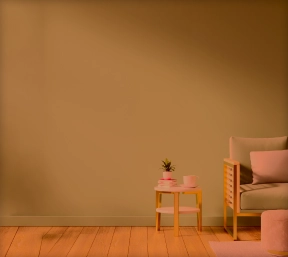- The Best Time To Paint Your House
- How to Evaluate a Professional Painting Service?
- How to Select a Paint, Paint Colour, and More?
- Colour Choices for Your House
- Preparation Before Painting Your House
- How to Prepare for Repainting a Room?
- Things to Check after the Painting Process
- Quick Fixes Post Painting Process
- How you can use Painting Alternatives?
- Asian Paints Beautiful Home Painting Service & Evaluation
- How to avail of Asian Paints Beautiful Home Painting Service?
- How Asian Paints can help you with Painting your Home?
Home Painting Guide
The Best Time To Paint Your House
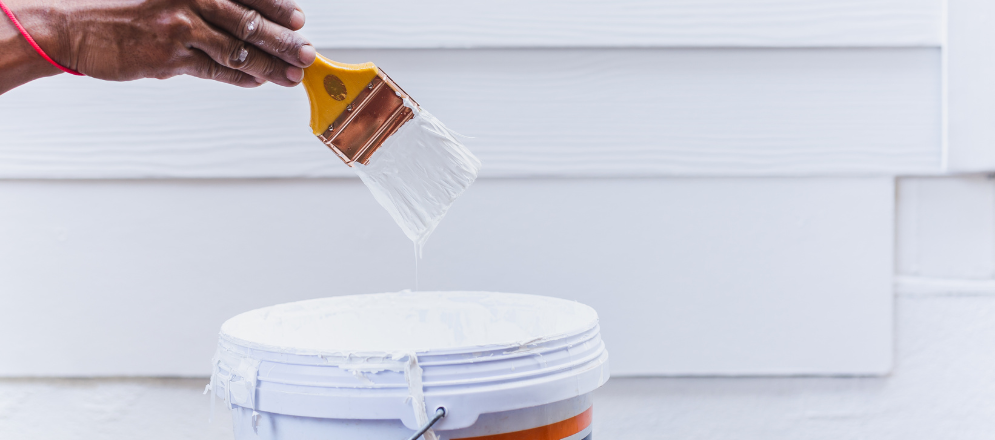
1. Painting Throughout the Seasons
When it comes to the best home painting time, choosing the right season can make a big difference in the result. Let's explore the best time to paint your house during each season.
Summer Season:
Summer is ideal for house painting due to low humidity and good drying conditions. However, one must avoid painting in direct sunlight to prevent issues like cracks and peeling. By considering these factors, you can ensure the best home painting job during the summer months.
Rainy/ Monsoon Season:
House painting during the monsoon season is always not recommended especially when it comes to the exterior house paint as the high humidity and moisture, can lead to discoloration and uneven patches. However, you can still plan to paint on rain-free days by checking the weather forecast and avoiding active rainfall, ensuring a better outcome.
Winter Season:
In India, the winter season provides optimal conditions for both interior and exterior house paint. The pleasant temperatures and low humidity make achieving a flawless finish easier. The crisp winter air ensures effective paint drying, resulting in a high-quality outcome. So, if you're planning for house painting, then winter is the best home painting time.
2. How Often Should You Paint Your House?
When it comes to house painting there’s always the question of ‘How often should we paint our house?’, so here are some points you can consider to understand the period to consider to repaint your house -
Frequency depends on surface type, condition, previous paint job, and environment.
Repaint the exterior every 5-10 years and the interior every 7-10 years.
Regular maintenance and inspection identify wear and tear signs, which can help you understand if repainting is required.
Areas with difficult weather conditions and sunlight exposure may require more frequent repainting, although one can take precautionary measures by using the best paints such as Asian Paints Apex Ultima Protek.
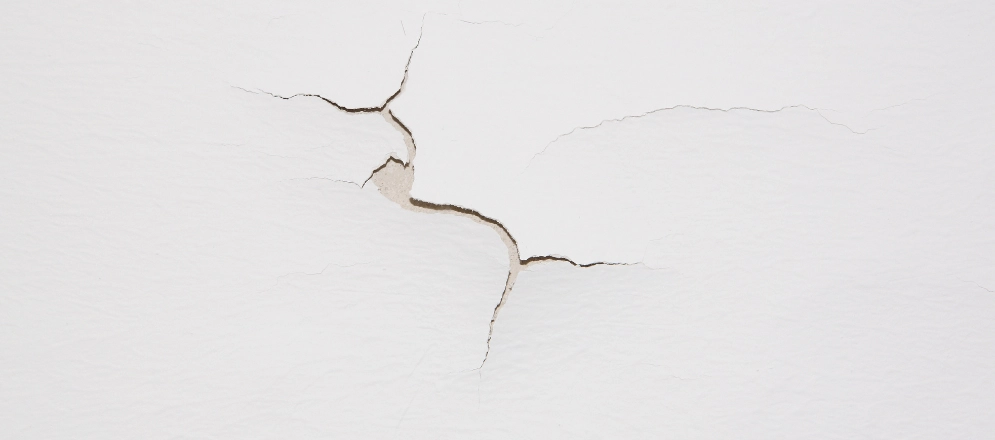
3. Signs That Your Home Needs Repainting
Although painting from time to time can be a good touch to your house, here are a few signs you need immediate repainting -
Peeling or Cracking Paint:
If you notice paint peeling or cracking, it's a clear sign that your home needs repainting. This could be due to weather damage or poor paint quality.
Fading Color:
Over time, exposure to sunlight can cause the color of your paint to fade.
Stains and Discoloration:
Stains, discoloration, and watermarks on your walls or ceilings can be signs of moisture issues or wear and tear. Repainting can help refresh the appearance and address any underlying problems.
Chalking:
Chalking is the formation of a powdery residue on the surface of the paint. This occurs as a result of aging and weathering. If you run your hand over the wall and notice a chalky residue, it's a sign that the paint is deteriorating and needs to be repainted.
4. Things to Consider while Repainting Your House
When repainting your house, here are some important things to consider:
Home Interior Colour Selection:
Match colors to your style, architecture, decor, and room atmosphere.
Surface Preparation:
Clean, sand, and repair for a smooth, long-lasting finish.
Quality of Paint:
Invest in durable, good-coverage paint to minimize touch-ups.
Finish Type:
Choose matte, satin, or gloss for varying durability and sheen.
Weather Conditions:
Check the forecast; avoid extreme temperatures, humidity, or rain.
Safety Precautions:
Prioritize safety with ventilation, protective gear, and stable working conditions.
How to Evaluate a Professional Painting Service?

Why You Should Choose Professional Painting Services?
Everyone prefers to DIY when it comes to painting their own homes, but we'd recommend hiring a professional or the best painting company in your area instead, as they have the expertise and can help you turn your home into your haven. So here are some points to consider when selecting a Professional Painting Service -
Professional Painting Experts:
Professional house painters possess the expertise and the right tools for the job. They offer guidance on paint selection and ensure the use of suitable brushes, resulting in a flawless finish.
Expert Color Consultation:
The best painting companies provide expert consultation on color palettes tailored to your surroundings and personality. As the perfect home exterior and home interior colour can create an inviting environment. Mixing the wrong hues can adversely affect your space's aesthetic.
Experienced Home Painting Services:
Professional home painting services offer skilled painters with extensive experience in painting techniques for walls and time-saving tricks while maintaining high-quality results.
Budget-Friendly Painting Professionals:
While budget considerations are crucial, sacrificing quality should not be the norm. Many home painting services offer tailored plans that align with your budget and preferences. Take a step-by-step approach to select the best professionals who meet your needs.
Service Warranty Assurance:
Paint defects can occur over time, making a service warranty valuable. Home painting services offer warranties that remain valid for days after project completion, ensuring your walls will be restored without unexpected expenses.
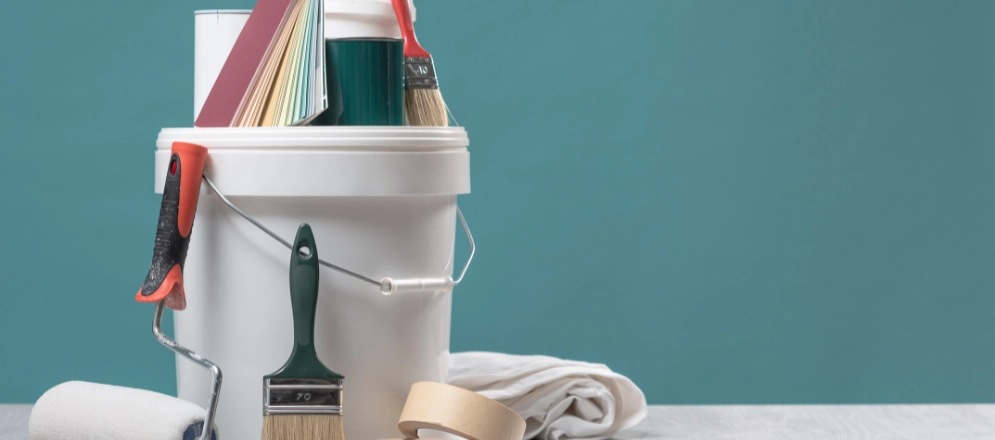
How to Identify the Perfect Contractor?
If you have considered seeking professional help for painting your home then here is a checklist for finding the perfect painting contractor or the best painting company -
Experience and Expertise:
Look for the best painting company or painting contractor who has extensive industry experience and expertise in various painting techniques.
Reputation and Reviews:
Check online reviews, testimonials, and ratings for positive feedback.
License and Insurance:
Ensure proper licensing and insurance for liability protection.
Portfolio and References:
Request a portfolio of previous work and client references to understand their painting techniques for walls, their understanding of painting, and more.
Clear Communication:
Ensure responsive, attentive, and clear communication.
Written Estimate and Contract:
Obtain a detailed written estimate from the painting contractor or company and review the contract thoroughly.
Warranty and Guarantee:
Inquire about any offered warranty or guarantee for work quality and issue resolution.
If you've chosen to go with a Professional Painting Service and are struggling to find one, then the best painting company services are just a click away. Asian Paints is here to help you with our own Beautiful Home Painting Service.
Once you’ve chosen a professional you can now jump to the interesting and creative part of selecting the paint, paint colour, and different colours for house painting.

Get an Asian Paints certified contractor for your home
How to Select a Paint, Paint Colour, and More?
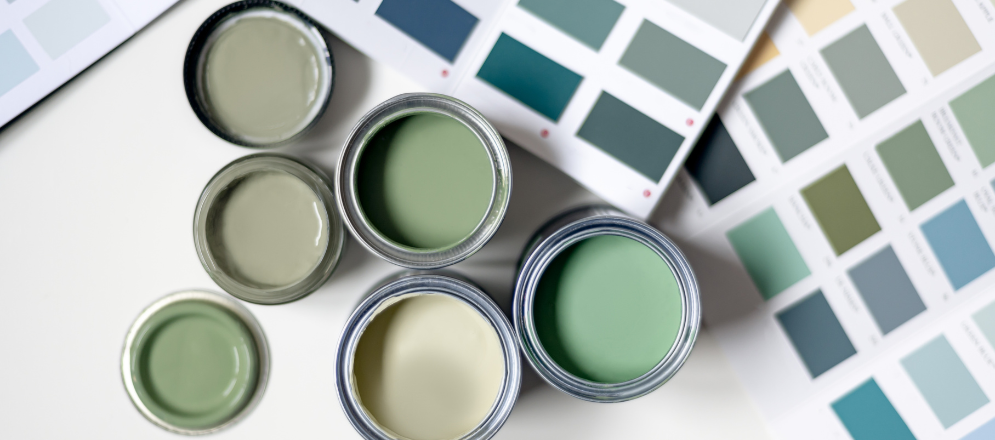
Types of Paints and Their Benefits
Paints come in various types, each designed for specific uses, and selecting the right one can significantly impact your home's aesthetics, and affect the different colours for house painting, and its durability. When choosing the house paint types, consider these types:
a. Types of Paints - Interior Section
Latex (Water-Based) Paint:
Ideal for interior walls and ceilings, this type dries quickly and is easy to clean. It emits fewer fumes, making it a good choice for indoor spaces.
Oil-Based Paint:
Known for its durability, oil-based paint is suitable for high-traffic areas. It creates a smooth finish but requires longer drying times and proper ventilation due to stronger fumes.
b. Types of Paints - Exterior Section
Acrylic (Water-Based) Paint
Resistant to cracking and fading, acrylic paint is excellent for exteriors. It offers good adhesion and weather protection, making it a reliable choice.
Oil-Based Paint:
Provides a sturdy, protective finish for outdoor surfaces. It's particularly useful for wooden or metal surfaces but requires longer drying times and adequate ventilation.
c. Types of Paints - Specialty Section
Epoxy Paint:
Used on floors and surfaces exposed to high traffic or moisture, epoxy paint provides exceptional durability and resistance.
Chalkboard Paint:
Great for creating functional and creative spaces, it transforms walls or furniture into chalkboards.
Heat-Resistant Paint:
Ideal for surfaces near stoves or fireplaces, this paint withstands high temperatures.
Anti-Mold and Mildew Paint:
Prevents mold growth and is suitable for damp areas like bathrooms.
You can also explore various house paint types from the Asian Paints Collections for Exterior Paints, Interior Paints, and Speciality Paints.
We are hoping that you are still with us and if you’ve understood the house paint types let’s dive into how to choose paint for home
How To Choose Paint Colours For Your Home Interior and Painting Mistakes to Avoid
Choosing the right home interior colour paints can greatly impact the look and feel of your home. So when it comes to the question ‘how to choose paint colours for your home interior?’, here are five common painting mistakes to avoid when choosing the right paint color for your home -
Neglecting Sample Testing:
Make sure to test paint samples on your walls in your home's lighting conditions.
Ignoring the Finish:
Consider the paint finish's properties. For eg. High gloss is known for its durability but it also highlights imperfections, while Matte is known for hiding imperfections but is less stain-resistant.
Underestimating Color Undertones:
Account for undertones (e.g., warm or cool). Undertones can be more pronounced on larger surfaces and also consider their interaction with furnishings and lighting.
Not Testing in Different Lighting Conditions:
Evaluate samples in various lighting situations, as lighting varies throughout the day and in different rooms.
Not Taking Your Time When Making Decisions:
When it comes to choosing a home interior colour it’s always safe to take your time and gather samples. If needed one can also consult the professionals at Asian Paints.
Colour Choices for Your House
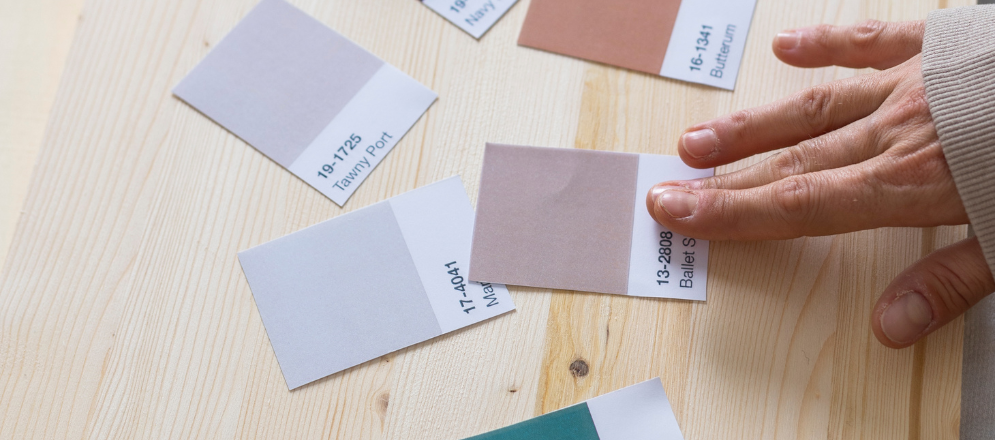
How can Color Affect the Environment in Your House?
The choice of color in your home can significantly influence the overall environment and atmosphere. Here's how color affects various aspects -
Mood and Emotions:
Different colors evoke different emotions. For example, warm colors like red and orange can create a cozy and energizing atmosphere, while cool colors like blue and green promote calmness and relaxation. Bright and vibrant colors can stimulate creativity and enthusiasm.
Perception of Space:
Lighter colors tend to make a room feel more spacious and open, while darker colors can create a cozier and more intimate setting. Strategic color choices can visually alter the size and shape of a room.
Temperature:
Colors can impact the perceived temperature in a room. Warm colors can make a space feel warmer, while cool colors can make it seem cooler. This can be especially relevant in rooms with different climate needs, such as bedrooms and living areas.
Functionality:
Color can influence how a room is used. For example, bright and cheerful colors are often used in kitchens and dining areas to enhance appetite, while soothing colors are preferred in bedrooms for better sleep.

How to Choose the Right Colors?
Selecting the good color for your house involves considering several factors -
Personal Preference:
Start with colors that resonate with your and your family's preferences. Your home interior design should reflect your personality and style.
Room Function:
Consider the purpose of each room. For relaxation, choose calming colors for bedrooms; for productivity, opt for energizing colors in home offices.
Lighting:
Assess the natural and artificial lighting in each room. Some colors may look different under various lighting conditions. Test paint samples in the actual room to see how they appear.
Color Harmony:
Create a cohesive color palette throughout your home. Choose colors that flow well together, either by sticking to a single color family or using complementary colors strategically.
Accents and Accessories:
Plan how your chosen paint colors will complement furniture, decor, and artwork in each room. Ensure a harmonious balance.
Trends vs. Timelessness:
While trendy colors can be appealing, consider whether they will stand the test of time or if you'll tire of them quickly. Neutral colors are versatile and timeless.
You can also go through our Asian Paints Colour Selection Guide to get an in-depth understanding of choosing the right colours for your home through Colour Psychology and Colour Shastra.
The Right House Colour Suggestions for Each Room
If you have gone through the previous two sections, you might have gained an understanding of how to choose paint for home based on various factors such as mood, personal preference, functionality, and more. In the following section, we will discuss the colours that match these factors for each room -
a. Living Room
Neutral Tones:
Beige, gray, or warm taupe are versatile options that can serve as a backdrop for various decor styles.
Accent Colors:
Add pops of color with decorative cushions, artwork, or furniture to inject personality and warmth.
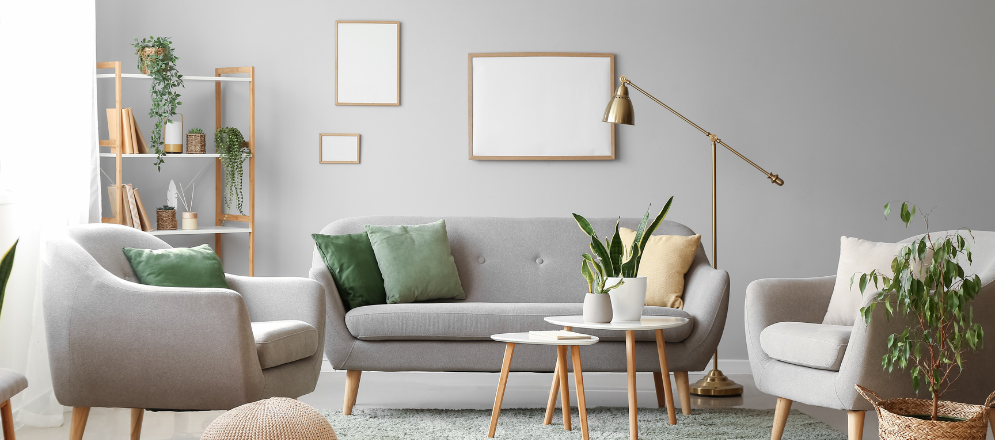
b. Kitchen
Light and Bright:
White or light pastels can make a kitchen feel clean and spacious.
Bold Accents:
Add bold colors through cabinets, backsplashes, or colorful appliances for a vibrant touch.
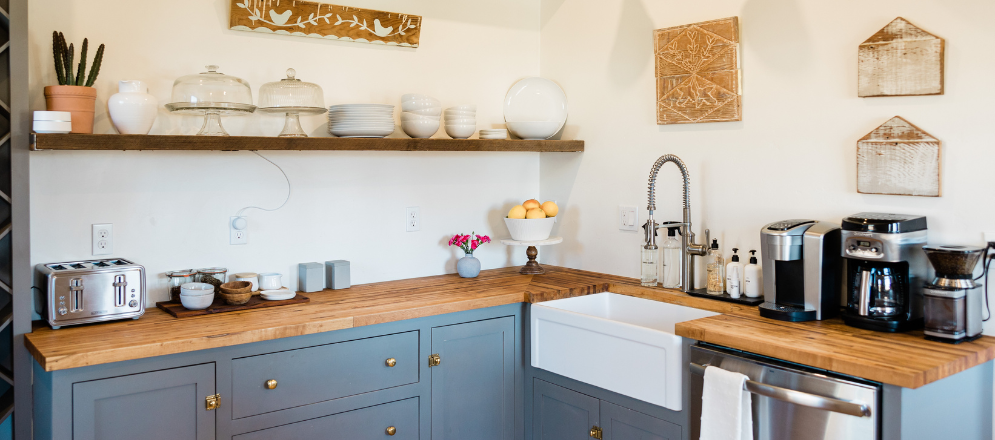
c. Bathroom
Soothing Blues or Greens:
These colors promote relaxation and are popular choices for bathrooms.
Crisp White:
White tiles and fixtures can create a fresh and clean look.
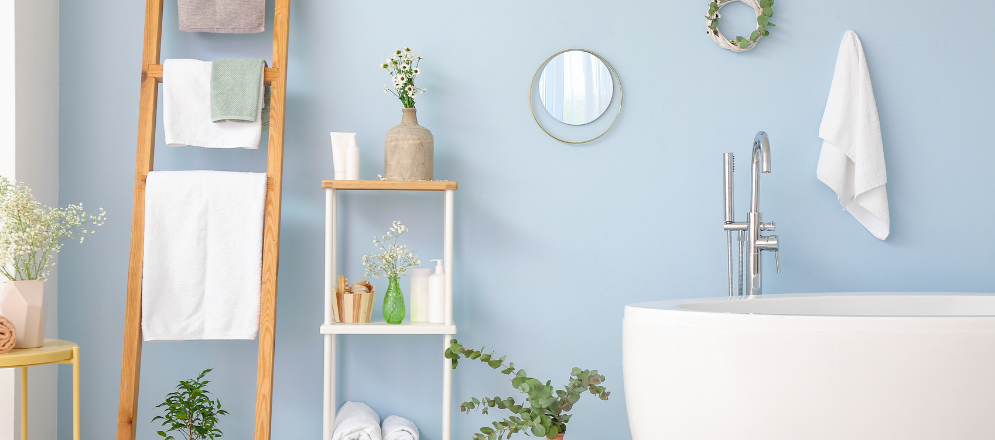
d. Bedroom
Soft Blues or Greens:
Create a serene atmosphere conducive to restful sleep.
Muted Purples:
Add a touch of sophistication and relaxation.
Warm Earth Tones:
Browns and deep oranges can evoke a cozy and intimate ambiance.
After covering how to select a professional painting service and choose a color, the next step is to begin pre-painting preparations for your home.
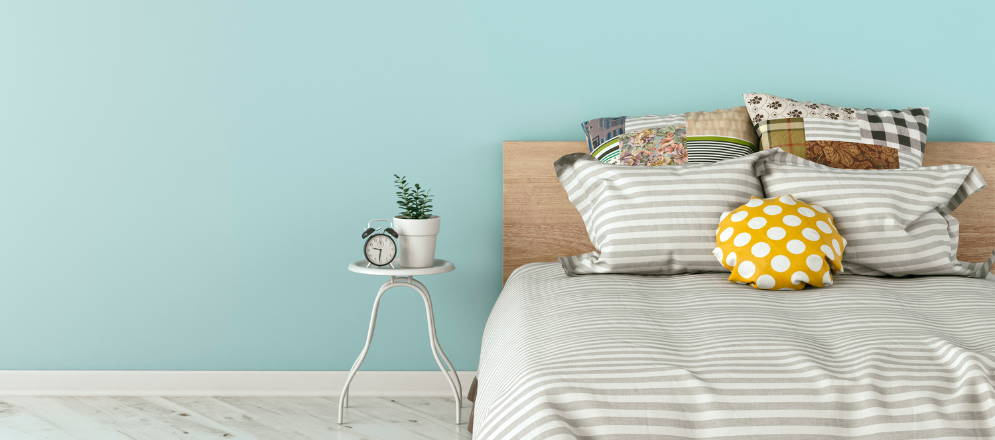
Preparation Before Painting Your House
Properly preparing your home for painting is essential to ensure a successful and long-lasting paint job. Understanding how to prepare a house for painting and performing effective wall prep for painting are key steps that form the foundation of the project. So let’s dive into the essential steps to help you prepare surfaces for painting and achieve the best results.
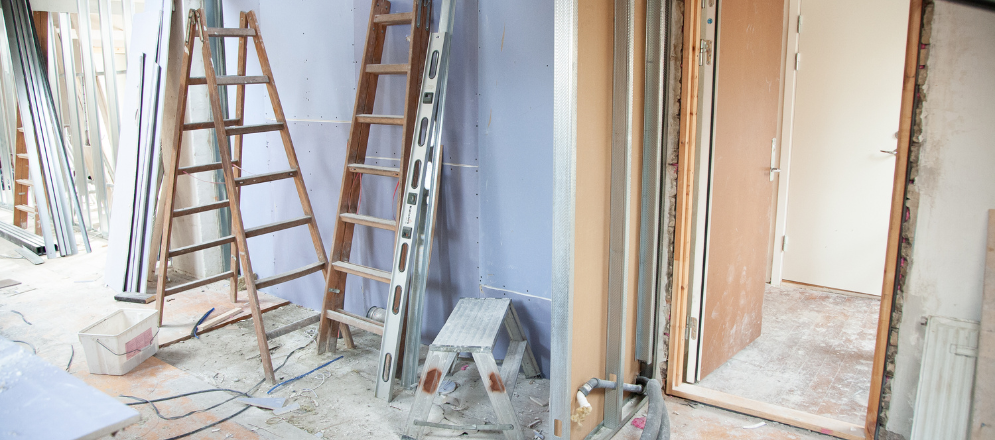

Get an Asian Paints certified contractor for your home
1. Benefits of Painting Your Home
Painting your home offers numerous benefits beyond just refreshing its appearance. Here are some key advantages -
Enhanced Aesthetics:
A fresh coat of paint can instantly transform the look of your home, making it more appealing and up-to-date.
Increased Property Value:
Painting is one of the most cost-effective ways to boost your home's resale value. A well-maintained, freshly painted property is more attractive to potential buyers.
Protection from Elements:
Paint acts as a protective barrier against moisture, UV rays, and harsh weather conditions, which can help prevent damage to your walls and surfaces.
Improved Indoor Air Quality:
Using low-VOC (volatile organic compound) or VOC-free paint can lead to better indoor air quality by reducing harmful emissions.
Personalization:
Paint allows you to express your personality and style, creating a unique atmosphere in each room.
Mood Enhancement:
The choice of colors can influence your mood and the ambiance of your living spaces. Calming colors promote relaxation, while vibrant ones can energize a room.
Easy Maintenance:
Certain paints are easy to clean, making it simpler to keep your walls looking fresh and clean over time.
2. Steps to Preparing Your Home for Painting
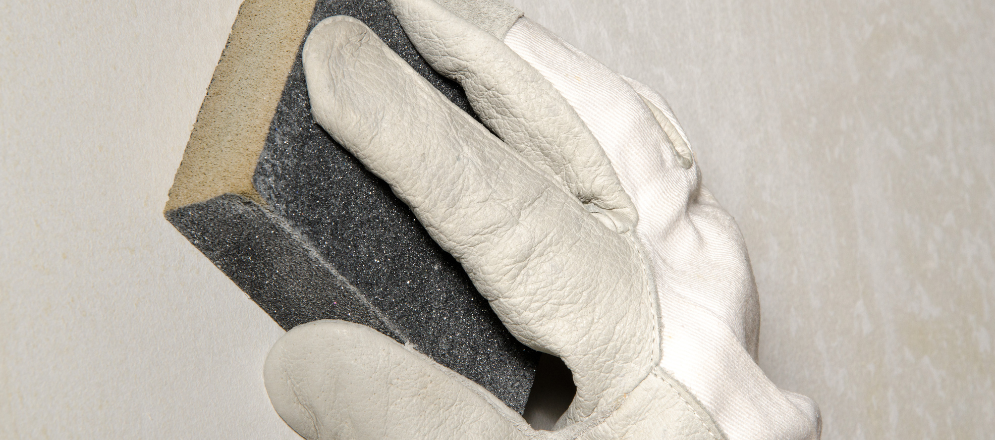
Properly preparing your home for painting is essential in the steps to paint a wall that can significantly impact the quality and longevity of the paint job. So we at Asian Paints have a simple checklist of steps to paint a wall for you to follow to prepare surfaces for painting and walls for painting, ensuring a smooth and lasting finish -
Clear the Room:
Remove furniture, decor, and fixtures to prevent accidental paint splatters.
Clean the Surfaces:
Thoroughly clean walls with water and mild detergent mixture, then rinse and let dry.
Repair Imperfections:
Patch holes, cracks, and blemishes with a spackling compound; sand for an even surface.
Remove Old Paint:
Strip away loose or damaged paint with a scraper or sander until the surface is smooth.
Sand the Surface:
Lightly sand the entire surface with fine-grit sandpaper for better paint adhesion and a smooth finish.
Clean Dust and Debris:
Use a damp cloth or tack cloth to remove residual dust and debris.
Protect Trim and Edges:
Apply high-quality painter's tape to protect trim, baseboards, and edges.
Choose the Right Paint:
Select the appropriate paint type and finish based on room purpose, lighting, and aesthetic preferences.
Gather Painting Supplies:
Collect brushes, rollers, trays, drop cloths, and paint cans in sufficient quantity.
Primer if Necessary:
Apply primer if needed for better paint adhesion and a uniform surface.
Ventilation:
Ensure proper ventilation by opening windows and doors to reduce fumes and aid drying.
Label and Organize:
Label paint cans with room names and colors for easy reference during the painting process.
3. Tips for Preparing Your Home for Painting
Here are some additional tips to make the preparation process smoother -
- Ventilate the area by opening windows and doors to ensure proper air circulation.
- Use high-quality painter's tape for clean lines and easy removal.
- Apply a second coat of primer if the existing color is significantly different from the new paint.
- Check the weather forecast and avoid painting on rainy or excessively humid days.
By following these steps and tips, you can ensure that your home is well-prepared for painting, leading to a successful and satisfying home improvement project. Now let's explore steps to paint a wall as well as tips for repainting a room.
How to Prepare for Repainting a Room?
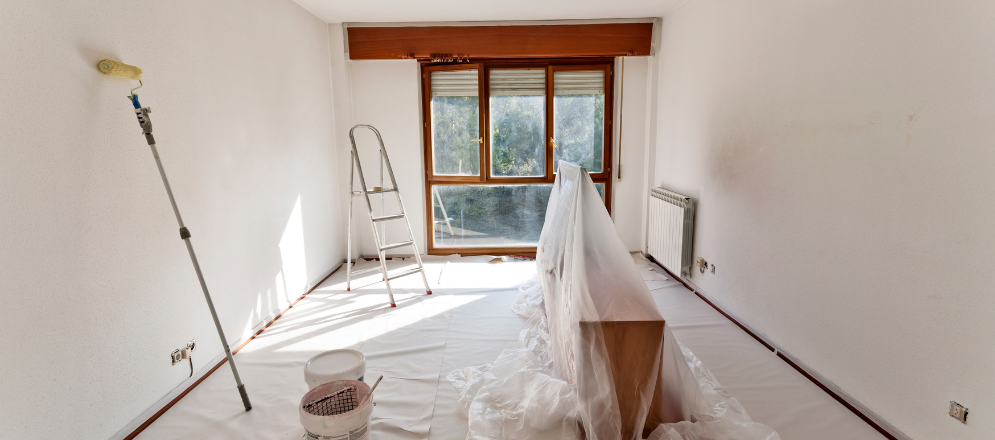
1. Steps for Painting/ Repainting Interior Walls of a Room
Repainting a room can rejuvenate your space and give it a fresh look. Here is the wall painting process step by step to repaint a room -
Preparation:
Prepare the room by clearing furniture, patching holes, and cleaning walls, while using painter's tape to protect trim and edges.
Choose Paint Colours:
Choose paint colors based on your desired mood and style, ensuring you buy enough paint to cover the entire space.
Gather Supplies:
Gather all the necessary painting supplies, including brushes, rollers, trays, paint cans, stir sticks, and a ladder.
Apply Primer:
Apply a primer coat to address imperfections or accommodate a significant color change, allowing it to dry before proceeding.
Cut In:
Use a brush to cut paint around the edges and corners, including the ceiling and baseboards, while also applying painter's tape.
Roll the Walls:
Roll the main wall surfaces with a roller, working in small sections and applying two coats for better coverage and a smoother finish, allowing each coat to dry thoroughly.
Finishing Touches:
Finish the job by removing the painter's tape while the paint is slightly damp, touching up any missed spots or imperfections with a brush, and reattaching fixtures and hardware.
Clean Up:
Clean up by washing brushes and rollers, disposing of paint cans and materials following local regulations, and returning furniture to the room once the paint is completely dry.

2. Tips for Repainting Interior Walls Project
When repainting walls, consider these additional tips such as cost of repainting a room and surface prep, other than the steps to repaint a wall, so that the process of repainting interior walls is smooth and easier -
Surface Preparation:
Other than the common steps to repaint a wall it’s important to properly clean and prepare the walls, including repairing any imperfections, for a flawless finish.
Use the Right Paint:
Use paint specifically designed for repainting interior walls for the best results.
Cost Considerations:
Estimate the cost of repainting a room, including paint, supplies for repainting interior walls, and any professional help if needed.
Colour Consistency:
Ensure that all paint cans for the same color are from the same batch to maintain consistent color throughout the room.
Things to Check after the Painting Process
After investing in a quality painting project for your home and using the best quality paints available, it's crucial to perform a thorough check to ensure that the high-quality painting job you've paid for meets your expectations. Here are some essential things to inspect after your home is painted -
Paint Coverage:
One of the key indicators of a high-quality painting job is full paint coverage. Examine the walls, ceilings, and trim to make sure that the paint has been applied evenly, without streaks or thin spots. Pay particular attention to corners and edges where it's easy to miss coverage.
Color Consistency:
Best-quality paints should result in consistent and accurate color throughout your painted surfaces. It's important to check that there are no visible variations in color, which could indicate that the paint was not mixed or applied properly. This is especially crucial when dealing with custom or bold colors.
Clean Lines and Edges:
The clean lines and edges of your painted surfaces are indicative of a high-quality painting job. Inspect the edges where the walls meet ceilings, baseboards, or any other trim. Straight, sharp lines without any bleeding or smudging demonstrate attention to detail and a professional touch.
Application Quality:
The application of the paint is another crucial factor to inspect. A high-quality painting job should exhibit even coverage, with no visible brush marks, drips, or streaks. Be sure to examine all painted areas for any imperfections or unevenness, as this can affect the overall appearance of your home.
Caulking and Sealing:
High-quality painting includes proper caulking and sealing around windows, doors, and other openings. Check for any gaps or inconsistencies in these areas, as they can affect both the aesthetics and energy efficiency of your home.
Cleanliness:
A quality painting job should leave your home clean and free of paint splatter and debris. Check that the painting crew has cleaned up their work area, including the removal of any drop cloths and painter's tape.
Final Inspection:
Before signing off on the project, perform a final inspection with the painting contractor. Address any concerns or issues you've discovered during your inspection and ensure that they are corrected to your satisfaction.
Quick Fixes Post Painting Process
Occasionally, even when a painting project appears to be flawless upon completion, it's not uncommon to encounter minor issues in the days or weeks following the job. These issues can arise due to various factors, such as environmental conditions or the natural settling of paint.
In such situations, it's helpful to know how to address these minor imperfections without relying on a warranty service from your contractor. Whether you're dealing with concerns like wall paint peeling off, occasional painting problems, or patches on the wall after painting, simple steps can be taken to quickly and effectively resolve these issues.
1. Wall Paint Peeling Off
Problem:
Sometimes, wall paint can start peeling off due to poor surface preparation or improper application.
Quick Fix:
Gently scrape off the peeling paint with a putty knife, sand the area, and repaint. Ensure proper surface preparation for adhesion in the future.
2. Patches on the Wall After Painting
Problem:
Patches may appear on the wall due to insufficient coverage or color variations.
Quick Fix:
Touch up the patches with the same paint color. It's crucial to use the original paint to ensure a seamless blend. If necessary, repaint the entire section for consistency.
3. Painting Problem
Problem:
Various painting problems can occur, such as brush marks, streaks, or uneven coverage.
Quick Fix:
Sand the affected area lightly to smooth out imperfections. Apply a new coat of paint using a roller for a more even finish.
4. Dirt and Stains
Problem:
Regular use and contact can lead to dirt, stains, or marks on painted surfaces.
Quick Fix:
Clean the surface with a mild detergent and water, and if stains persist, apply a fresh coat of paint or use stain removers specifically designed for painted surfaces.
How you can use Painting Alternatives?
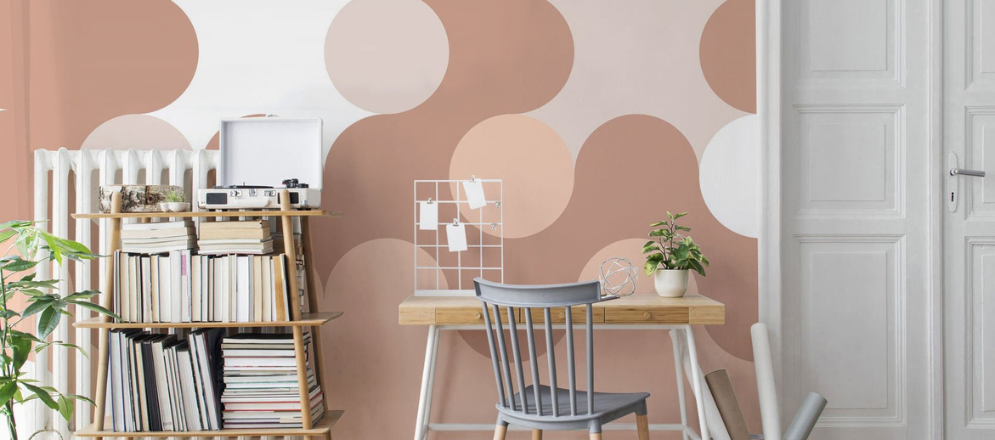
Sometimes, giving your space a fresh look doesn't necessarily involve repainting. Here are some creative ways to re-decorate your room, focusing on room corner decoration and corner decoration items -
Wallpapers:
Choose from a diverse range of wall coverings with various patterns, textures, and colors to revamp your living room corner with a single wall, creating an instant focal point.
Wall Stickers:
Add a unique touch with various designs, from natural motifs to abstract patterns, and easily personalize your living room corner décor, with the flexibility to change them later.
Furniture Makeover:
Refresh your furniture by reupholstering in complementary styles, and introduce decorative cushions, throws, or rugs for a colorful and textured living room corner without repainting.
Wall Tiles:
Transform your room with room corner decoration such as peel-and-stick wall tiles, available in materials like subway tiles or faux stone, perfect for creating a modern backsplash in your living room corner.
Re-decorating your space without painting allows for creativity and flexibility in refreshing your home. These corner decoration ideas, such as wallpapers, wall stickers, furniture updates, and wall tiles, can help you achieve a renewed and stylish look in your coroner for living room décor while avoiding the time and effort required for a full painting project.
Although we've covered every aspect of home painting, we recognize that even with this information, you may still require some assistance. That's why Asian Paints is here to support you with our own Beautiful Home Painting Service, scroll below to learn more about it.
Asian Paints Beautiful Home Painting Service & Evaluation
Asian Paints Beautiful Home Painting Service is a comprehensive and professional home painting service. This service is designed to provide homeowners with a hassle-free, high-quality, and reliable painting experience. Before we dive into how you can avail of our services, here's a detailed breakdown of how our associates meticulously assess your site, guiding you toward the perfect transformation.

1. How does Beautiful Home Painting Service evaluate a Site?
The Asian Paints Beautiful Home Painting Service Associate typically evaluates a site in a step-by-step process to ensure a thorough understanding of the requirements and conditions. Here's a step-wise breakdown of how they evaluate a site:
Initial Contact:
The evaluation process often begins with the customer reaching out to Asian Paints for painting services.
Appointment Scheduling:
An appointment is scheduled with the Beautiful Home Painting Service Associate to visit the site in question.
Site Visit:
The Associate visits the site at the scheduled time to assess the scope of work and specific requirements.
Inspection and Measurement:
During the site visit, the Associate inspects the current condition of walls, ceilings, and other surfaces to be painted. The inspection is undertaken using the Asian Paints TruCare Moisture Meter machine. During this inspection measurements may be taken to determine the area that needs to be painted. The measurements are taken using the Asian Paints TruCare Laser Distance Meter.
Surface Analysis:
The Associate assesses the condition of the surfaces, looking for issues like cracks, dampness, or other defects that may need to be addressed before painting. Waterproofing issues, if identified are checked at the source level to ensure the issues do not keep recurring.
Customer Discussion:
The Associate discusses the customer's preferences, color choices, and any specific design or finish requirements.
Estimation:
Based on the site assessment and customer input, the Associate provides an estimate of the cost and time required for the painting project. A digital Quote is provided to the customer detailing the cost basis of the site inspection undertaken by the Associate.
Material Selection:
The Associate helps the customer choose suitable colour shades and finishes based on their preferences and the site's conditions.
Proposal:
Once the material selection is done, a detailed proposal is provided to the customer, outlining the scope of work, cost breakdown, and timelines.
Finalization:
Once the customer approves the proposal, the project is finalized, and a contract is signed.
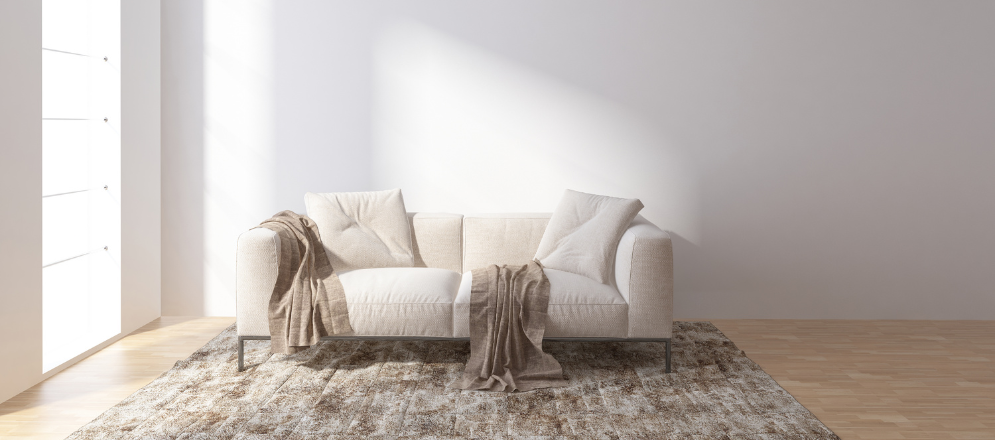
2. Factors of Site Evaluation
Now one might wonder what are the factors of evaluation when it comes to Asian Paints. Well, when evaluating a wall for painting or other purposes, several factors are typically considered to assess its condition and suitability for the intended use. Here is a list of the exact factors of evaluation for a wall as undertaken by the Asian Paints Beautiful Home Painting Service Associate -
Surface Condition:
Check for cracks, dents, or other visible damage on the wall's surface.
Smoothness:
Assess how smooth or uneven the wall surface is, as this can affect the quality of the finish.
Cleanliness:
Examine the wall for dirt, dust, grease, or other contaminants that may need cleaning before painting.
Moisture and Dampness:
Look for signs of moisture or dampness, as this can indicate water damage and may require special treatment.
Previous Paint:
Determine if the wall has existing paint and assess its condition. This helps decide if paint removal or additional preparation is needed.
Adhesion:
Check how well the existing paint adheres to the wall to ensure proper bonding of the new paint.
Texture:
Note the texture of the wall, such as smooth, textured, or rough, as this can impact paint application and appearance.
Structural Integrity:
Inspect the wall for any structural issues or weaknesses that may need repairs before painting.
Lighting Conditions:
Evaluate the lighting in the room or area where the wall is located, as it can affect how paint colors appear.
Environmental Factors:
Consider environmental factors like humidity, temperature, and exposure to sunlight, as they can influence paint choice and durability.
How to avail of Asian Paints Beautiful Home Painting Service?
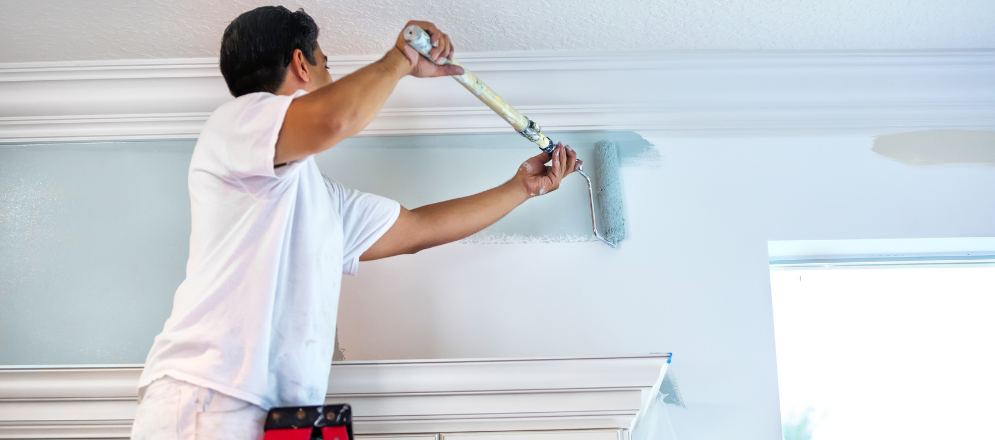
Now that we have learned about how the Asian Paints Beautiful Home Painting Service Associate evaluates a site and the factors involved, here is how you can avail of our services -
You can book Beautiful Home Painting Service by filling up our Beautiful Home Painting Service form. Once you fill out the form, our agents will follow up with we following steps to paint your home:
- Our Helpline Agent will call you to obtain some more details and book an appointment for you.
- The Beautiful Home Painting Service Associate will then reach out to you to finalize a date and time for your home visit.
- The Associate will visit your home and undertake a technical site evaluation.
- Post the Evaluation, the Associate will provide you with a Digital Quotation. Upon approving the Quotation, we will start the work on your Site.
When it comes to the process of selecting a contractor or service provider, it can be a a lot of strenuous work and will need research, hence to help you ease your house painting journey with our Beautiful Home Painting Service and more.
How Asian Paints can help you with Painting your Home?
Asian Paints can assist you in painting your home by offering a range of services to make the process easy and enjoyable. We provide Beautiful Home Painting Services, ensuring the well-being of your home and family. Additionally, we also offer expert color consultations to help you choose the perfect palette for your space, ensuring that your home reflects your unique style and personality.






